|
A vacation in the UK last month included a quick side trip to Italy to see a cousin, not that we need any excuse to visit Italy! The flight from Gatwick to Pisa was over continuous cloud cover, unfortunately, but the return to Heathrow enjoyed perfect weather - at least as far as the English Channel! I could only get a seat behind the wing so the engine exhaust impacted several photos, but here are some I especially liked. More can be found in the Gallery of the Month; as always, click on any image to enlarge it. 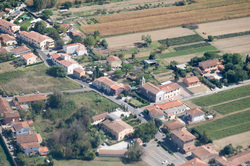 This is about as typical an Italian village as you can find! Taken just after take-off from Pisa airport, I love the clusters of red-tiled buildings, and how the straight-edged fields contrast with the winding roads. 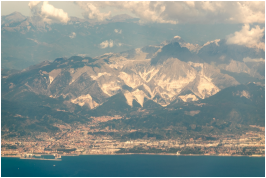 After take off we flew up the Western coast of Italy past several small ports; this one had some remarkably white mountains behind it. It turns out that these are the quarries for the world-renowned Carrara marble, used over the centuries for everything from Michelangelo's David to London's Marble Arch and the Peace Monument in Washington, DC. 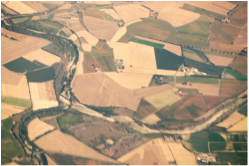 Further north we passed over the extensive agricultural region of the Po Valley, which runs right up against the Alps. It also includes the industrial areas of Turin and Milan, and the vineyards of Asti! 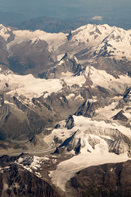 Clear skies over the Alps gave some stunning views of the mountains. The center peak here is the Matterhorn, as impressive as ever, but while we also saw many glaciers, it was apparent that some were retreating quite rapidly, such as the one in the foreground on La Ruinette. 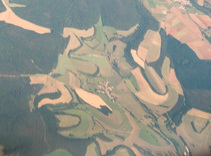 Heading into southern France I was struck again by the wonderful patterns created by farmers as they cope with the hilly topography and the need to maintain woodland among their fields. And sometimes the patterns seem to form something else, too; once I'd seen the "horns" at the top of these fields, the overall pattern seemed to me to resemble a Cubist's interpretation of a bull! 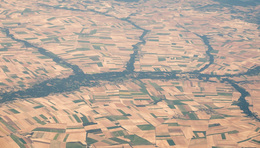 Where agriculture is king every available piece of land is used, not only where four rivers come together to provide irrigation for the fertile plains, but as far as the eye can see. 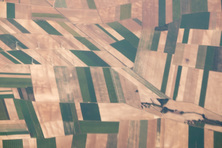 Even so, I'm at a loss to explain why there needed to be such a strong diagonal division between these fields! It makes for a striking composition, all the same.
0 Comments
Leave a Reply. |
AuthorJon Inge writes about his travels and the sights that have caught his eye. Archives
November 2018
Categories |

 RSS Feed
RSS Feed
